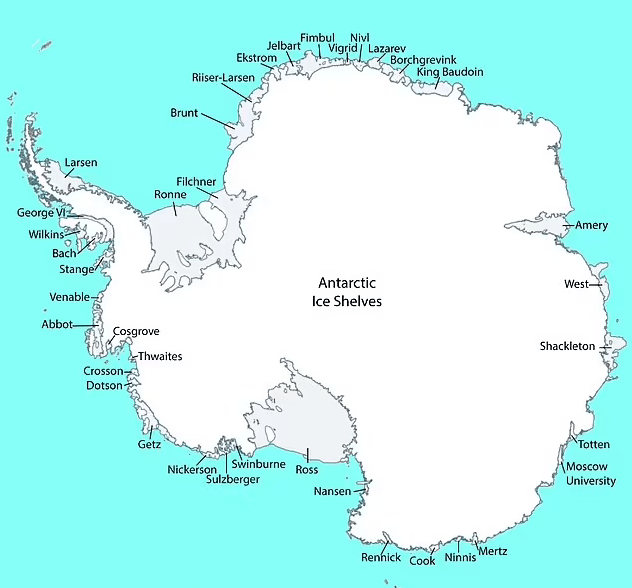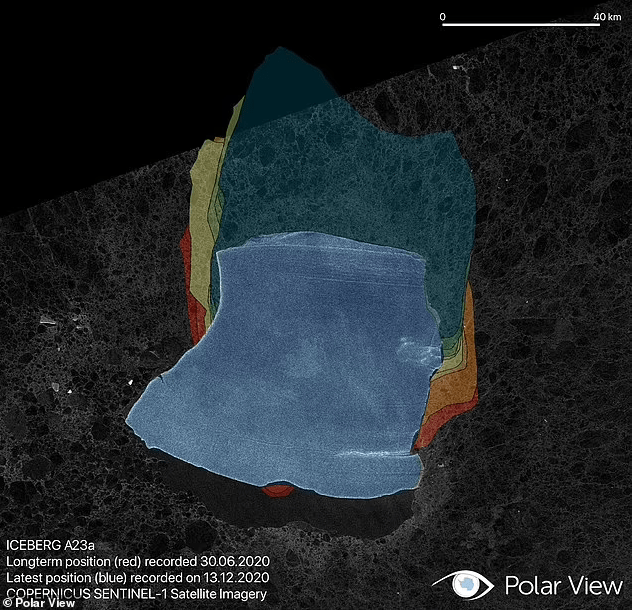After three decades of remaining grounded on the ocean floor, the world’s largest iceberg, A23a, has finally started moving. A colossal ice mass, spanning 1,540 square miles and towering 1,312 feet, A23a, shaped like a ‘tooth,’ had been stuck since breaking off from the Filchner Ice Shelf in August 1986.

Its recent mobility is attributed to being freed from the ocean floor, allowing it to drift northward propelled by wind and ocean currents. This movement is anticipated to continue until A23a encounters rougher waters in the open ocean, potentially leading to its breakdown.
Unlike many icebergs that detach and float away from Antarctica, A23a’s limited movement over the years was due to being grounded, making it less susceptible to fragmentation. Remote sensing expert Dr. Andrew Fleming noticed the first signs of A23a’s movement in 2020, speculating that its size reduction eventually led to losing grip and initiating motion. The cause behind this long-anticipated shift remains uncertain, with some considerations about possible changes in shelf water temperatures.
‘It was grounded since 1986 but eventually it was going to decrease in size sufficiently to lose grip and start moving,’ he said.
‘[We were] wondering if there was any possible change in shelf water temperatures that might have provoked it, but the consensus is the time had just come.’

A23a’s journey is being closely monitored as large icebergs post-breakoff pose threats to ships and wildlife. Icebergs typically ground when their keel surpasses the water’s depth, and A23a’s liberation opens avenues for tracking its trajectory. American planetary scientist Lindy Elkins-Tanton is part of a voyage aiming to explore A23a.

The iceberg is expected to reach the Antarctic Circumpolar Current, a 13,000-mile loop around Antarctica. There’s a possibility of it becoming grounded again near South Georgia, an island in the southern Atlantic Ocean. This scenario could disrupt the feeding routines of local wildlife, impacting seals and seabirds.


Should A23a melt, minerals released could nourish organisms at the ocean’s bottom, fostering biological activity. Dr. Catherine Walker at the Woods Hole Oceanographic Institution highlights the life-giving nature of icebergs.
The larger context of iceberg dynamics involves global warming-induced coastal instabilities in Antarctica and Greenland. Rising waters and air temperatures accelerate melting and increase calving rates. A76, the former record holder, detached in May 2021 but fragmented into three pieces. Ice shelves, large floating platforms connecting to landmasses, are integral to understanding these phenomena.
Guinness World Records notes the largest iceberg ever, exceeding 12,000 square miles, sighted in the Southern Ocean in 1956. The changing records underscore the ongoing impacts of climate change on polar ice dynamics.


